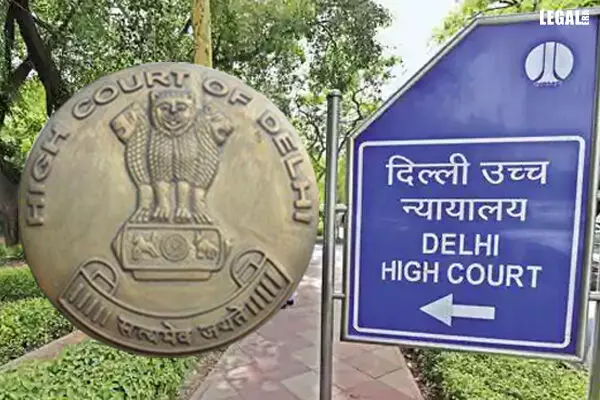- Home
- News
- Articles+
- Aerospace
- Agriculture
- Alternate Dispute Resolution
- Banking and Finance
- Bankruptcy
- Book Review
- Bribery & Corruption
- Commercial Litigation
- Competition Law
- Conference Reports
- Consumer Products
- Contract
- Corporate Governance
- Corporate Law
- Covid-19
- Cryptocurrency
- Cybersecurity
- Data Protection
- Defence
- Digital Economy
- E-commerce
- Employment Law
- Energy and Natural Resources
- Entertainment and Sports Law
- Environmental Law
- FDI
- Food and Beverage
- Health Care
- IBC Diaries
- Insurance Law
- Intellectual Property
- International Law
- Know the Law
- Labour Laws
- Litigation
- Litigation Funding
- Manufacturing
- Mergers & Acquisitions
- NFTs
- Privacy
- Private Equity
- Project Finance
- Real Estate
- Risk and Compliance
- Technology Media and Telecom
- Tributes
- Zoom In
- Take On Board
- In Focus
- Law & Policy and Regulation
- IP & Tech Era
- Viewpoint
- Arbitration & Mediation
- Tax
- Student Corner
- AI
- ESG
- Gaming
- Inclusion & Diversity
- Law Firms
- In-House
- Rankings
- E-Magazine
- Legal Era TV
- Events
- News
- Articles
- Aerospace
- Agriculture
- Alternate Dispute Resolution
- Banking and Finance
- Bankruptcy
- Book Review
- Bribery & Corruption
- Commercial Litigation
- Competition Law
- Conference Reports
- Consumer Products
- Contract
- Corporate Governance
- Corporate Law
- Covid-19
- Cryptocurrency
- Cybersecurity
- Data Protection
- Defence
- Digital Economy
- E-commerce
- Employment Law
- Energy and Natural Resources
- Entertainment and Sports Law
- Environmental Law
- FDI
- Food and Beverage
- Health Care
- IBC Diaries
- Insurance Law
- Intellectual Property
- International Law
- Know the Law
- Labour Laws
- Litigation
- Litigation Funding
- Manufacturing
- Mergers & Acquisitions
- NFTs
- Privacy
- Private Equity
- Project Finance
- Real Estate
- Risk and Compliance
- Technology Media and Telecom
- Tributes
- Zoom In
- Take On Board
- In Focus
- Law & Policy and Regulation
- IP & Tech Era
- Viewpoint
- Arbitration & Mediation
- Tax
- Student Corner
- AI
- ESG
- Gaming
- Inclusion & Diversity
- Law Firms
- In-House
- Rankings
- E-Magazine
- Legal Era TV
- Events
Delhi High Court: Technical Deficiencies Do Not Render Section 34 Of A&C Act Non-Est

Delhi High Court: Technical Deficiencies Do Not Render Section 34 Of A&C Act Non-Est
The respondent had contended that the filing of the petition was time-barred, and the defects were non-curable
The Delhi High Court has held that technical deficiencies, including pagination and affidavit attestation, do not invalidate petitions under Section 34 of the Arbitration and Conciliation (A&C) Act,1996.
The bench comprising Justice Manoj Kumar Ohri held that every objection in the filing would not render a petition non-est and it was only the defects that went to the root of the matter that would make the filing non-est.
The petitioner contested an arbitral award issued on 15 March 2019 and filed the petition on 10 July 2019. The initial filing on 29 June 2019 faced issues, as it was deemed non est due to procedural errors. Thus, instead of following the appropriate format, a company petition was erroneously filed, rendering the first attempt ineffective.
Subsequently, on 10 July 2019, the petitioner refiled the petition, encountering objections from the Registry, including pagination concerns, jurisdictional matters, and the attestation of affidavits.
The petitioner addressed the objections during the subsequent clearance attempts on 30 July 2019, 01 August 2019, and 02 August 2019.
The respondent contended that the filing on 10 July 2019 was time-barred, non est, and the defects were non-curable.
On the other hand, the petitioner countered that the defects were procedural and curable, promptly addressing the objections raised by the Registry.
The objections of the Registry encompassed issues including incomplete pagination, concerns about pecuniary jurisdiction, and attestation of affidavits.
The respondent argued that the objections, if not rectified within seven days, should result in the petitioner being non-suited.
The Court examined the objections raised by the Registry. It distinguished between the defects that strike at the root of the filing's validity and those that were curable through rectification.
The bench, while emphasizing the intelligibility of the filing, referred to the earlier cases, underscoring the importance of meeting the basic requirements for an application under Section 34 of the A&C Act. It deemed the Registry’s objections procedural and curable, and the non-removal within seven days did not render the subsequent re-filing as non est.
Thus, while exercising its discretion under Section 34(3) of the A&C Act, the judges considered the petitioner's satisfactory explanation. It considered the factors contributing to the delay, including procedural objections and the closure of the Registry during summer vacations.



